Behind Closed Doors @ Corsair Memory, Inc.
More:
|
|
|
Now we are on the other side of Corsair’s facility and this is where all the modules come after being assembled. The first stop for the newly assembled modules is the pneumatic SPD programmer. This machine allows the user to load a stack of modules and then it automatically programs the SPD and then runs a quick test to see if it works properly. The red bucket on the left is for failed modules, and then black bucket is for modules that have passed (being held in the photo). This is the first non-visual testing that the modules endure. If the modules pass this step they move on to platform testing. It is here that Corsair uses the same testing methods we do to find out if memory is stable! Yes, they use the same RSTPro2 cards that we use for stability testing on our memory reviews and run selected tests on each module to ensure that they work. If the pairs pass the testing they become “matched pairs” at this point in time and will remain together. If the memory modules throw just one error they are sent back to the other side to be re-worked.
Pro Series:
Since the XMS Pro series uses new custom designed heat spreaders Corsair had to purchase extra equipment just to put the heat spreaders on!
|
|
|
The new XMS Pro series that we all know and love need some special treatment! The other modules that get regular heat spreaders are put on by hand and shipped out, but the XMS Pro modules are actually bonded to the heat spreaders! This requires that they must be baked on in the oven again! A special tri-planer machine applies the compound evenly to each heat spreader and then the modules are placed in the spreaders. Once they are baked in an oven of the same type I have previously shown the stickers are placed on them and they are packaged by hand. Corsair said they are currently producing about 1500 modules of XMS Pro series memory a day with 4 stickers per module. That’s 6,000 stickers a day that someone has to be putting on!
Additional Items of Interest:
While at Corsair we saw some other interesting machines that were not on the line, but used in developing new memory modules.
|
|
|
The machine on the left is used mainly for testing server memory stability at severe temperatures. When this image was taken there were a number of loaded server boards running loops of RSTPro2 testing while at high temperatures. This is not something that is done to every module, but Corsair like to do random checks of their batches. The test machine on the right is a set of thermo baric chambers. One side is below freezing while the other side it very hot. The modules are then slid from side to side between these extreme temperature variations. This is used to find the quality of the solder used on the modules. If the manufacturing process worked they will be fine, but if there is a weak connection it will crack from the extreme temperature changes.
The Future:
|
|
Corsair’s test lab is staffed by a few application specialists that are truly one of the driving forces behind the success of Corsair’s products. These guys honesty work at Corsair during the day and at night they go home and over clock/play games like the rest of us (not to mention one builds custom rocket engines). All incoming IC’s are qualified and selected by these select few and they are the ones who write the custom SPD’s for the modules. These guys are the enthusiasts best friend! It is these guys that are leading the way in the memory industry!
Conclusion:
I’ve been in the IT industry for some time now and it is truly a pleasure to work with Corsair. I have found that Corsair is a company that is honest and this was again shown to be true with the offer of an all access facility tour. I found their facility to be very nicely maintained and the line seemed to be moving smoothly. I was also happy to hear that they were adding some more lines and are planning on keeping their XMS line here in America (There value select line is overseas). With all the recent manufacturing jobs going over seas it is nice to see that Andy Paul, the CEO of Corsair, is staying put with their largest and most important line. Corsair Memory, Inc. currently has almost 140 employees here in America so the next time you purchase some memory consider which country it was manufactured in along with the quality of what you are getting. No matter how you look at it Corsair Memory seems to be a winner!
I’d like to thank Corsair for allowing me to walk around the facility and talk to workers on the line without an escort. I now have a better understanding of how memory is manufactured and the research and testing that goes on for making memory. Happy Holidays and good luck in 2004!

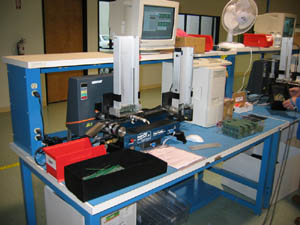
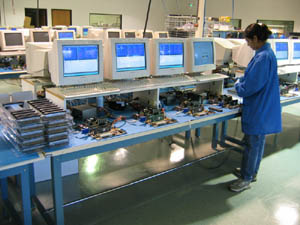
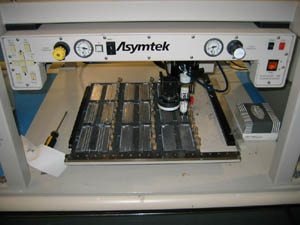
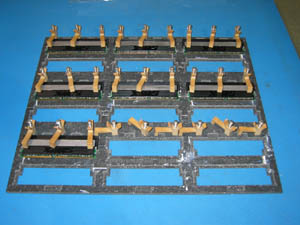
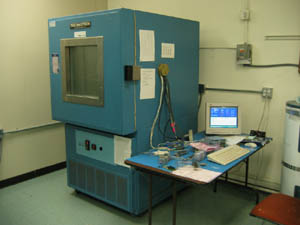
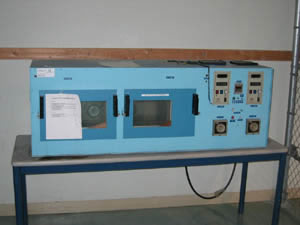
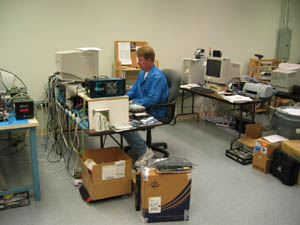
Comments are closed.